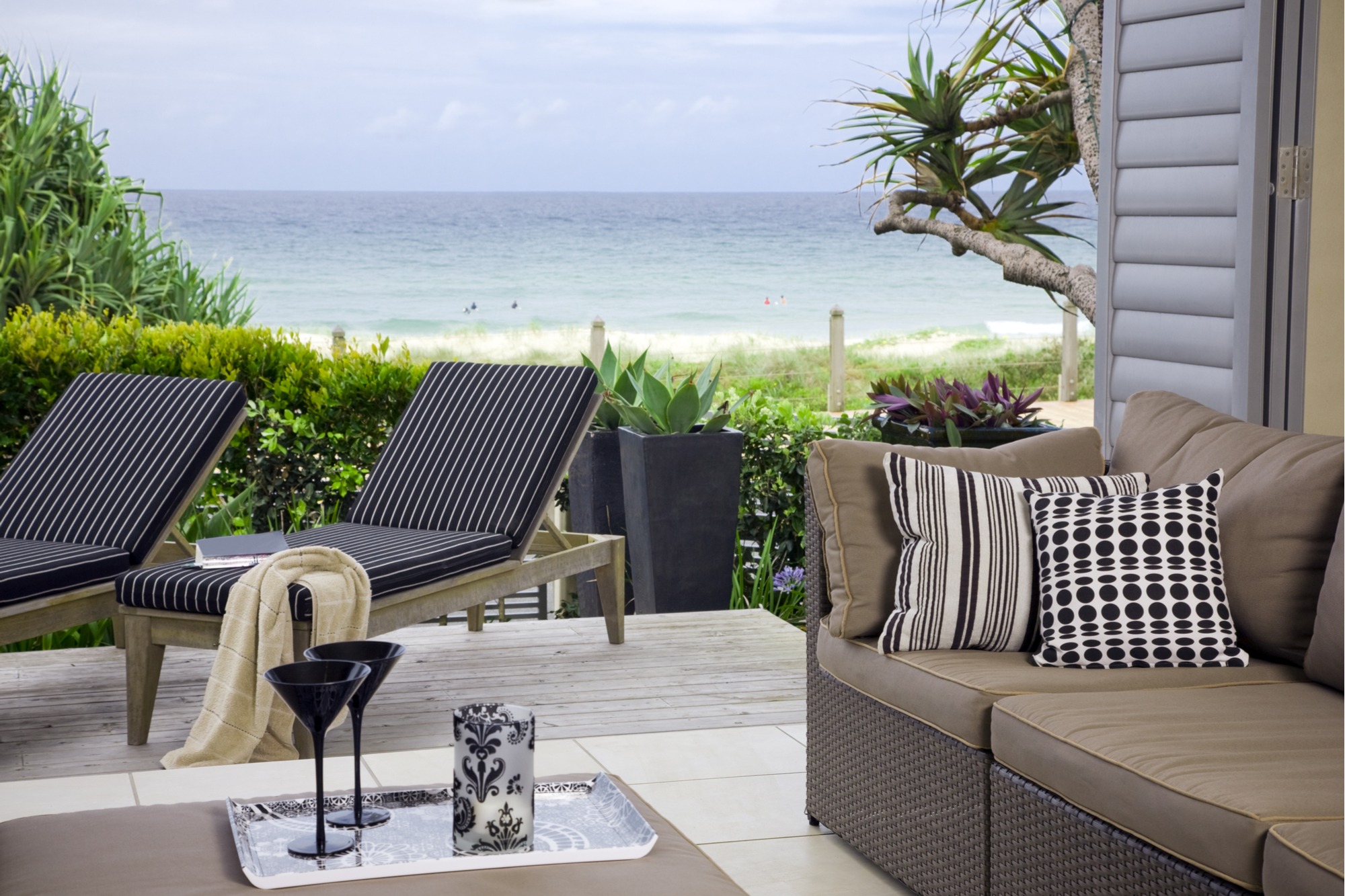
There are some landscaping and garden trends that never go out of style, like the timeless look of paving stone patios or the use of drought-tolerant plants in Southern California gardens. Then, there are others that come and go, such as impeccably groomed hedges or ice plant.
There is certainly no reason to redesign your landscaping every few years to keep up with current trends. This is particularly true when you can keep your garden looking fresh and up to date by simply switching out a few plants, recovering your patio cushions or cleaning up what you already have. Of course, there are times when a bit more is needed to increase your home’s curb appeal or give your outdoor living areas a facelift, but on a year-to-year basis, your focus should be continuing to improve your yard to make it better fit your lifestyle and function better for you and your family.
To give you a little inspiration while determining your backyard improvement projects for this year, we have put together five of the landscaping and garden trends we expect to see grow in 2018. You just might find that your yard is already on trend or that with a few tweaks, you can make your yard more functional and up to date.
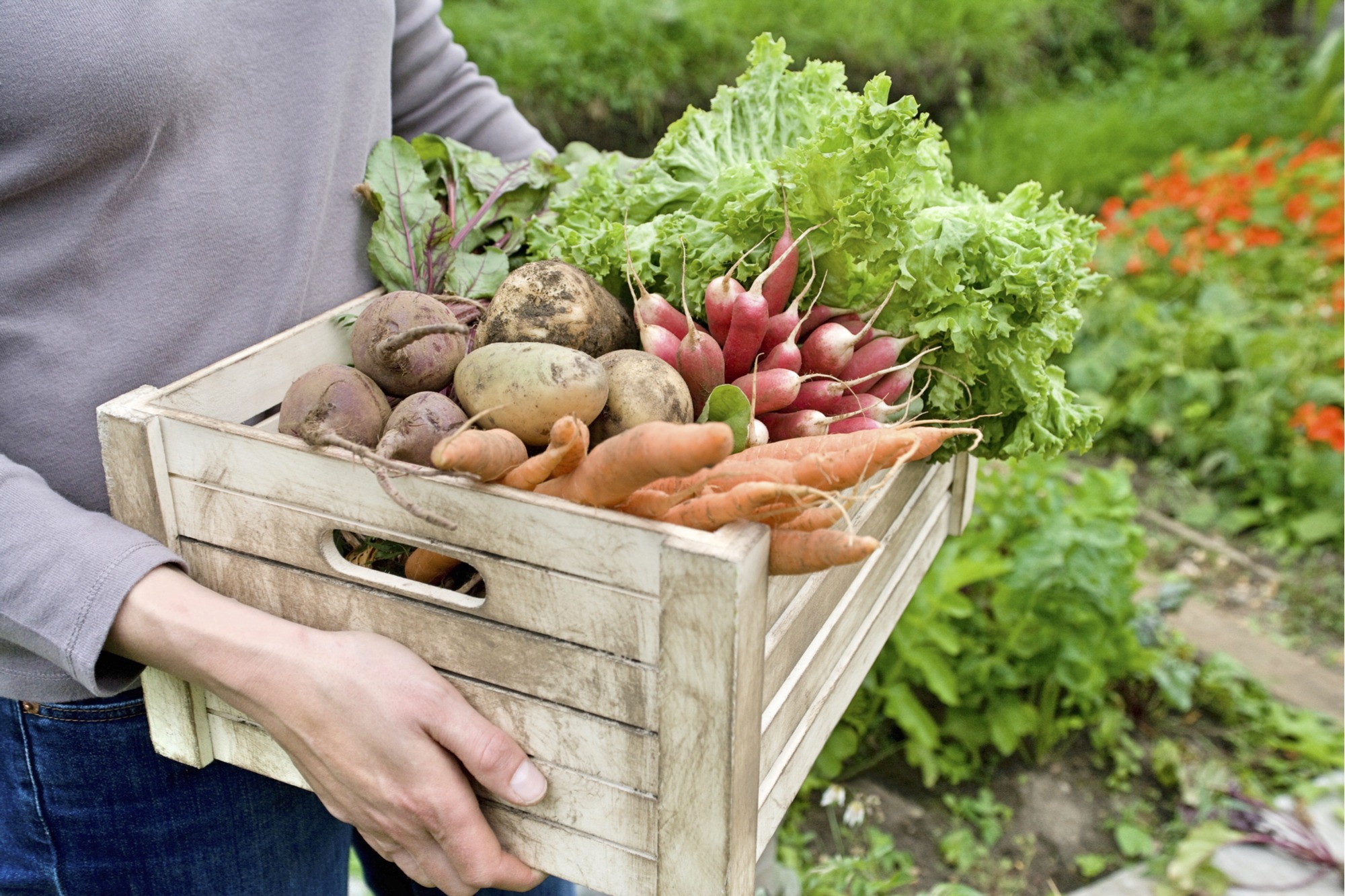
1. Backyard Vegetable Gardens and Container Gardens
Backyard vegetable gardens have been a trend for as long as people have had backyards. Growing your own food is certainly nothing new and urban farming has been a thing for several years now. The difference we are seeing in the last couple of years is that millennials are impacting this trend with their distinct interest in sustainability, eating local, growing and making the things they need, and appreciating activities that they consider old-fashioned.
More millennials are becoming homeowners, which means they are affecting both home buying and landscaping trends. With this, we are seeing a growth in the re-dedication to growing more than just a couple of tomato plants and a desire to grow enough produce to provide ingredients for regular meal planning.
We have also seen enormous growth in the vegan population over the last two years, which means a lot more people are committing to a plant-based diet. As these newly minted vegans become more aware of pesticide use and land-use issues, many are choosing to grow some of their own food.
However, at the same time, there is a growing movement towards downsizing, which is largely being driven by retirees and millennials. With more people choosing to live in multi-family buildings, tiny houses and just smaller properties, many of these folks have less room for gardens. This is why we are seeing more container gardens popping up and why we expect to see even more in 2018.
Here are some previous posts that can help you get in on this trend regardless of how much space you have in your backyard:
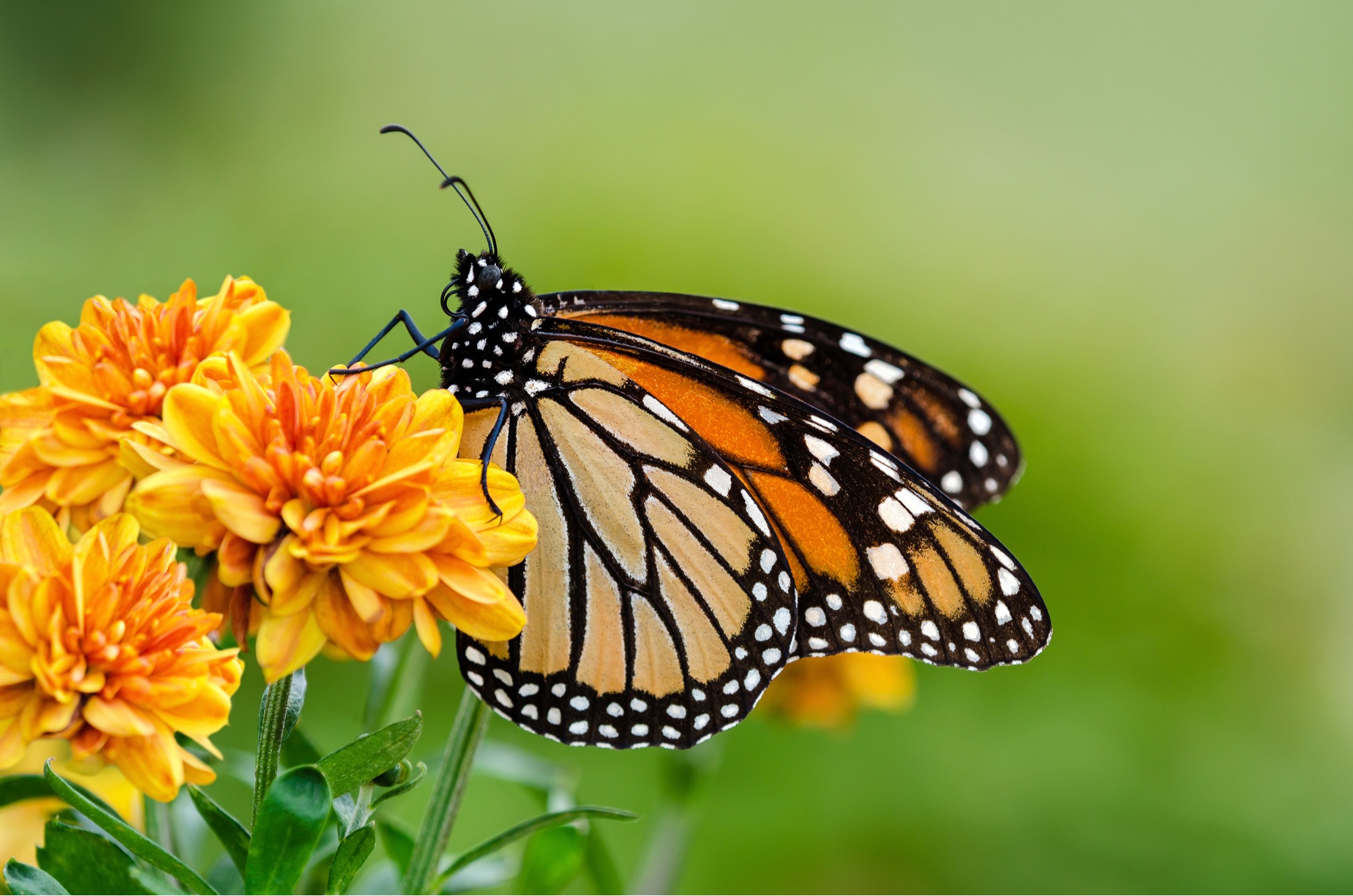
2. Butterfly Gardens, Bee Gardens and Bird Gardens
This trend actually began a few years ago when, as a whole, the population became more aware of the significant decline in some species of bees and butterflies. After years of drought in Southern California, many homeowners here saw an even greater decline and recognized the need to help these struggling pollinators. Therefore, some folks have been planting gardens that attract and provide habitat for butterflies, bees and hummingbirds for years.
The reason we expect to see this garden trend grow in 2018 is that an increasing number of people are acquiring a better understanding of how our interactions with the environment affect wildlife, how we rely on that wildlife to pollinate the plants we eat, and just how important pollinators are for those backyard gardens we are all wanting.
Creating habitat for pollinators helps local bee, butterfly, moth, bat and bird communities, while also helping your garden – whether it is filled with flowers or food plants. Therefore, even if you are not planning on getting in on all of the 2018 landscaping and garden trends, this is one that you should at least consider, since it is good for local wildlife and for your garden.
Here are some resources to help you create a pollinator-friendly garden this year:
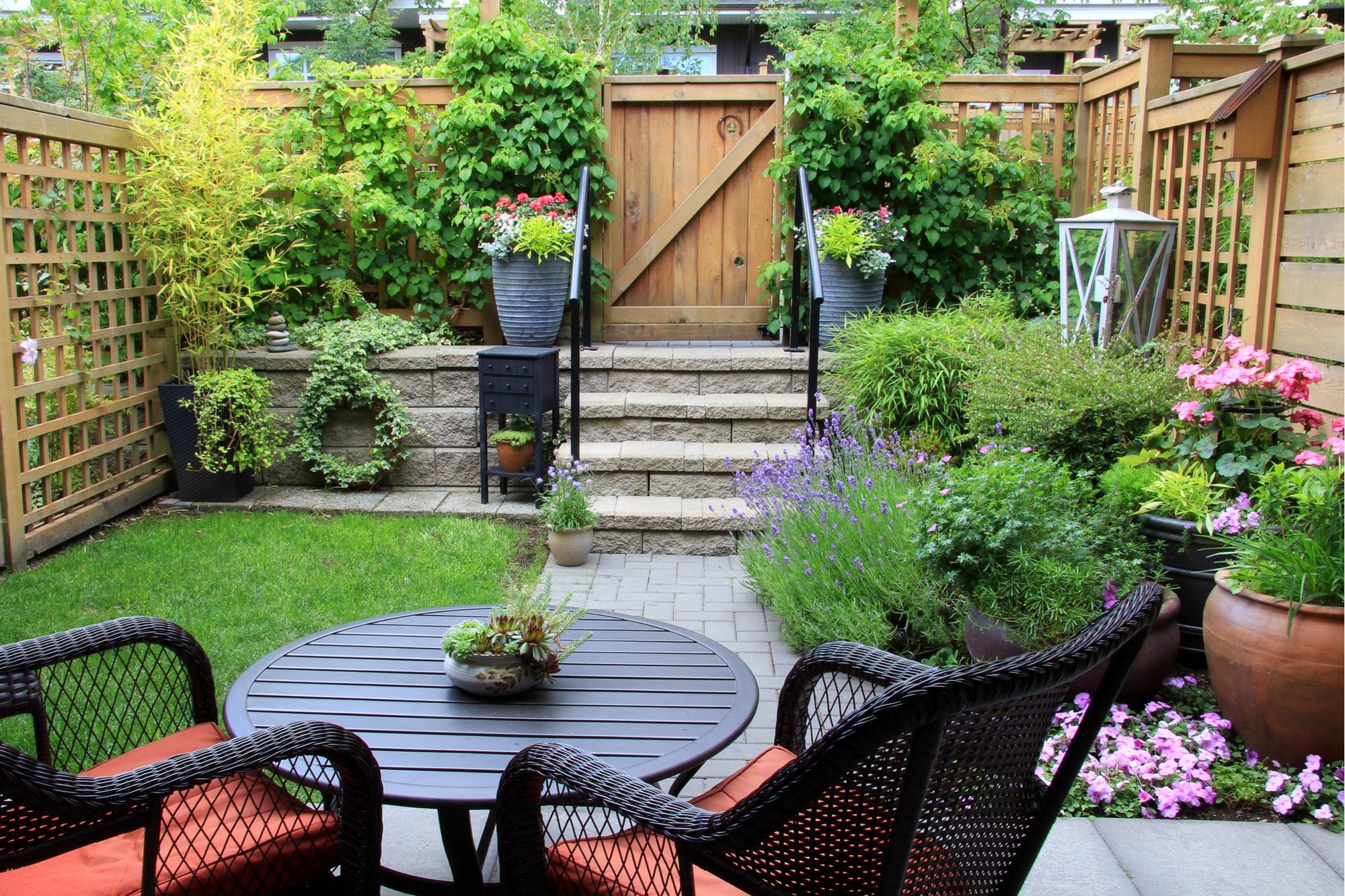
3. Smaller, Lower-Maintenance Lawns
Over the last decade, there has been a significant increase in Southern California homeowners interested in replacing their water-loving lawns with drought-tolerant plants, artificial grass or low-water groundcovers. As the state struggled through years of drought and water-use restrictions became a necessity, it was not surprising that so many folks looked for low-water alternatives to natural grass lawns.
However, there were still plenty of folks who held on to the conventional lawns most of us grew up with and that continue to be a bit of status symbol. And, now that most experts are saying the most recent drought is over, these folks are breathing a sigh of relief and thinking maybe it is okay to hang on to their lawns for a few more years.
Of course, anyone who lives in Southern California knows that the next drought is always right around the corner. Plus, a growing number of homeowners are retirees or millennials starting families who want to spend less time taking care of their homes and yards and more time enjoying their friends, families and activities. At the same time, a lot of these people do want a stretch of grass where their children, grandchildren or pets can play.
This is where the trend towards smaller, lower-maintenance lawns comes into play. Opting for a smaller, natural grass lawn or for an artificial lawn allows you to have the lawn you love without wasting the time and water required to keep a larger, natural grass lawn looking green and lush.
If you are among the many homeowners who want at least a little lawn but need a lower-water, lower-maintenance version that better fits your lifestyle, here are some useful resources to help you get in on this landscaping trend:
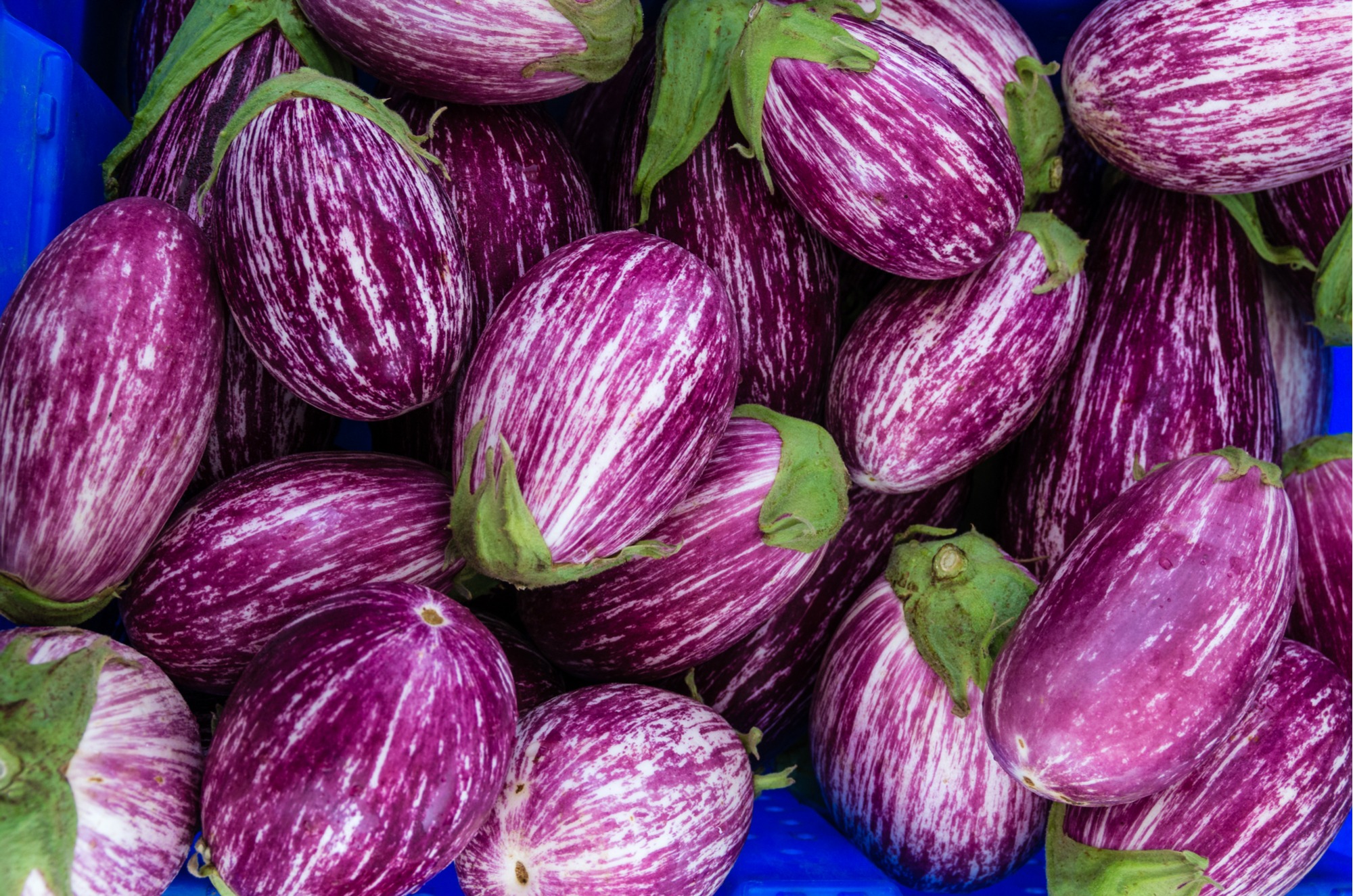
4. Planting Purple Herbs, Fruits, Vegetables and Flowers
Every year, the Pantone Color Institute names a color of the year that fits with their predictions and market research for how hues will be used in almost every industry in the year ahead. The Pantone 2018 Color of the Year is Ultra-Violet, which means we can expect to see shades of violet and purple in fashion, interior design, gardens, jewelry design and more.
This will surely affect 2018 landscaping and garden trends with the demand for purple herbs, fruits, vegetables and flowers that allow folks to include this lively, uplifting color in their garden design. If you are interested in including purple in your outdoor palette this year, some options to consider are eggplants, grapes, lavender, Mexican sage, purple asparagus, purple cauliflower, orchids, violets and salvia.
To help you get in on what is sure to be one of the hottest garden trends of 2018, here are some resources:
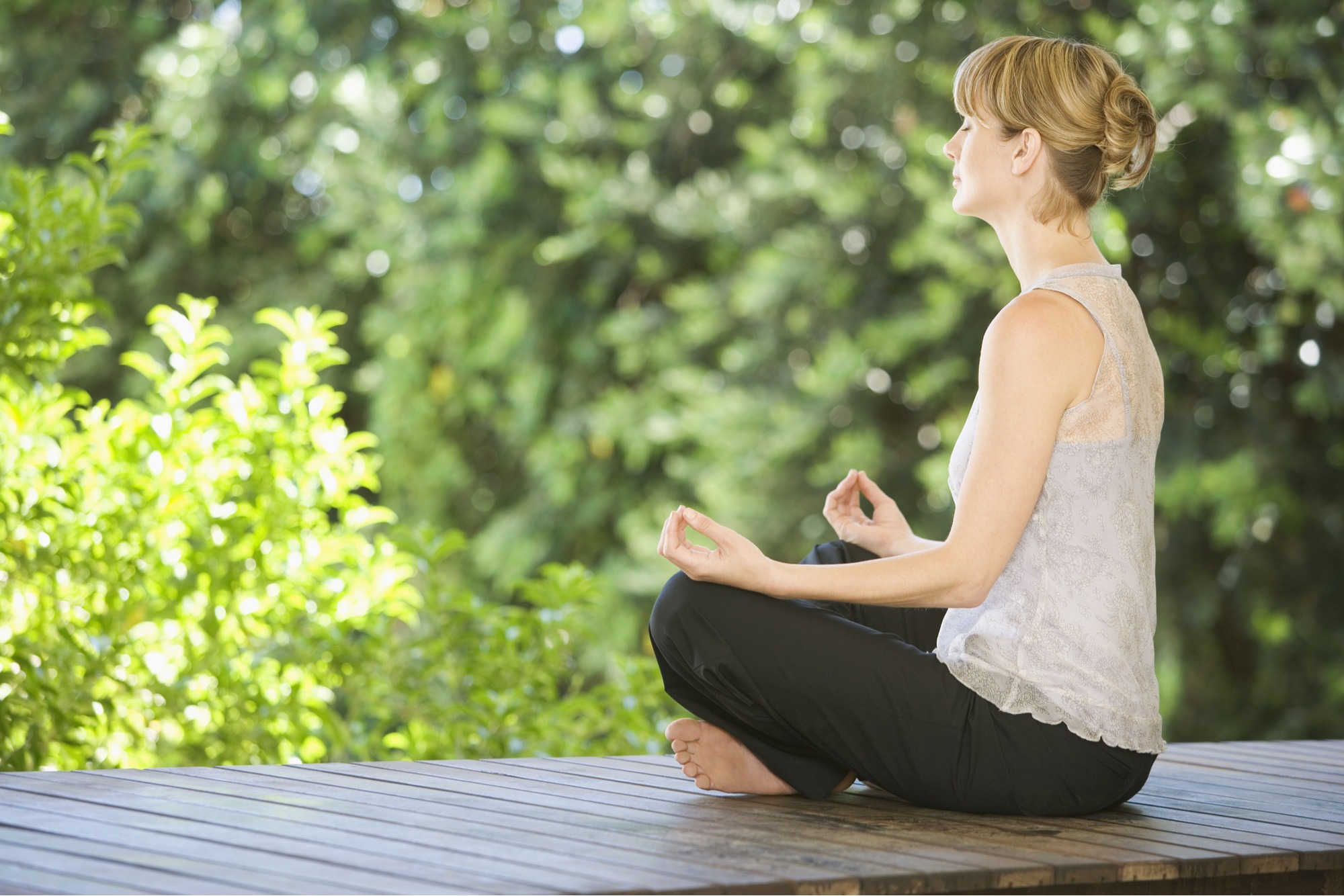
5. Meditation Gardens
Another landscaping trend that we expect to see taking off in 2018 is the inclusion of meditation gardens. Having a dedicated space for meditation, yoga or relaxation encourages you to make time to partake in these stress-reducing activities. Thus, including a welcoming, calming space in landscape design is growing in popularity among folks who recognize that this can help them lower their blood pressure, be more present and improve their overall well-being.
We are seeing more people asking for small wood decks or paving stone patios separate from their main outdoor living areas. Often, these meditation and yoga platforms are covered and are bordered by bamboo, fragrant herbs, or flowering plants in calming shades of blue, lavender, pink or white. Comfy meditation cushions are common additions, and many include access to electricity for music or lighting.
If this is the year that you would like to transform your backyard to better suit your lifestyle and foster well-being, here are some previous posts you may find helpful:
Outdoor Kitchen + Patio Trends (2018)

The new year is upon us, which means it is time to set goals for the year ahead, let go of the past and find out what is on trend for 2018. Interior design trends expected this year include transitioning away from accent walls and towards accent floors, embracing wabi-sabi design (the Japanese concept of finding beauty in imperfection), and going bold with fabric and wallpaper patterns.
Outside, the biggest patio trends and outdoor kitchen trends include party hosting essentials, bold colors and those little extras that take your outdoor living areas to the next level. Check out these eight trends we expect to see in 2018 to make sure your patio and outdoor entertaining spaces are up to date.
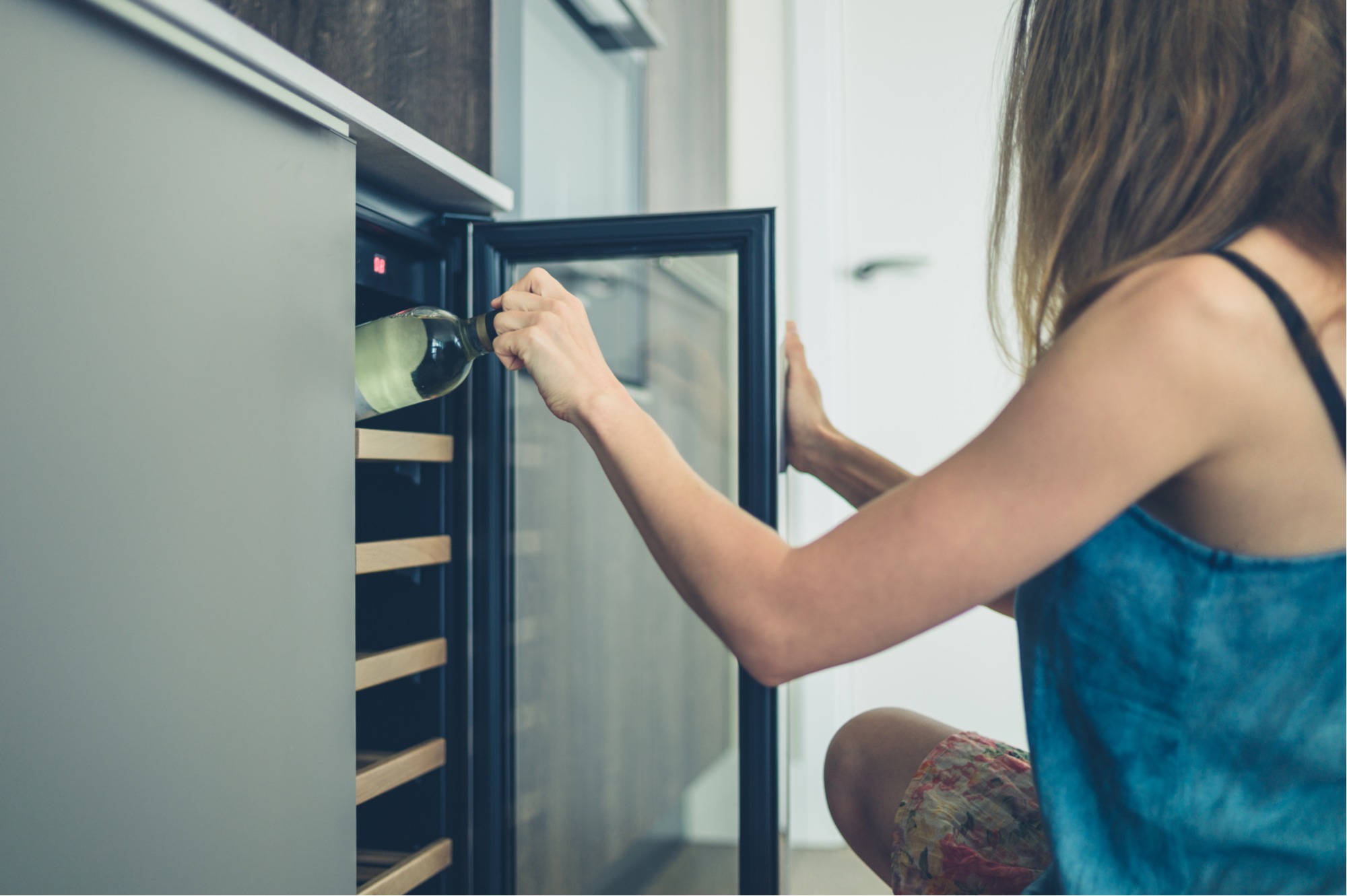
1. Wine Refrigerators
We have seen the popularity of indoor wine refrigerators growing over the last few years, and real estate agents are noticing that potential home buyers are asking for this feature more often than before. While some homeowners are opting for wine cellars or wine rooms, most are choosing smaller, more-affordable options, such as wine closets, and built-in or standalone refrigerators.
This year’s outdoor kitchen trends also include wine refrigerators, which makes sense with the continued focus on outdoor living. After all, who wants to walk all the way into the house every time they need another bottle of wine for their al fresco dinner party?
There are two basic options for outdoor kitchen wine refrigerators: under-the-counter models and standalone wine fridges that you can simply place and plug in to the nearest electrical outlet. For folks who already have outdoor kitchens, it may not be feasible to install a built-in wine fridge, so a standalone option might be your best choice. However, if you can expand your counter space or rework your design a bit to fit an under-counter, outdoor wine cooler, this option almost always looks more upscale and better integrated into your overall outdoor kitchen design.

2. Coffee Bars & Tea Bars
The emphasis on outdoor living seems to always be on the rise, particularly in Southern California. Therefore, it is no surprise that people are beginning to use their patios for more than afternoon birthday parties and evening dinner parties. Including a coffee bar in your outdoor kitchen design is certainly not new, but it has now grown in popularity enough to be considered a trend.
Coffee bars are the most popular and are perfect for folks who enjoy starting their day with a cup of coffee on the veranda or for those who often entertain in the evening when it is appropriate to offer guests coffee with dessert. However, with so many people moving towards healthier diets, hot teas are becoming a hot trend for outdoor entertaining as well.
If your budget allows, an espresso machine is a nice addition that is sure to impress your guests and, at minimum, seriously up your at-home latte game. It could even keep you from stopping for those pricey coffee drinks on the way to work when you can step out on your patio and make your own. For a proper espresso bar, you will also need a milk frother, which may or may not be included on your espresso machine, and an outdoor refrigerator to keep dairy or plant-based milks cold.
For a more basic setup, opt for a pod coffeemaker, which allows your guests to choose from an assortment of teas and coffees that can all be made with one space-saving machine.
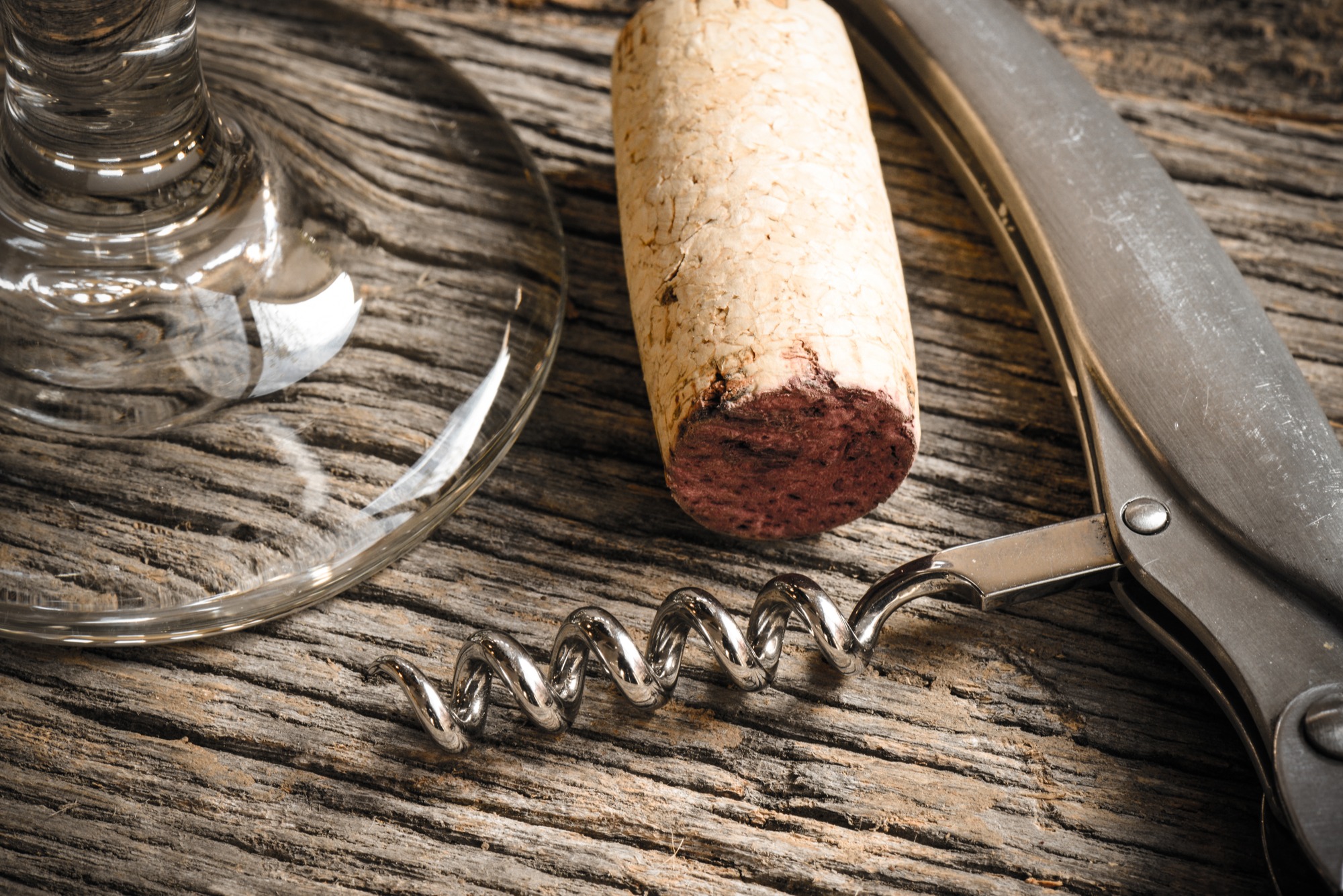
3. Patio Bars & Bar Carts
Patio bars have never gone out of style and are pretty much always on trend, so it should come as no surprise that this trend will continue into 2018. The biggest difference in recent years is that not everyone is opting for a full, built-in bar in their outdoor kitchen or on their patio. Folks with smaller patios or smaller budgets are choosing bar carts.
This low-cost option allows party hosts to offer their guests cocktails and the option to make their own drinks just like with a built-in patio bar; however, a bar cart need only take up space on your patio during the party. When the festivities are over, the glasses and liquor bottles can be returned to your indoor bar and the cart can be either used indoors or put in storage until your next soiree.
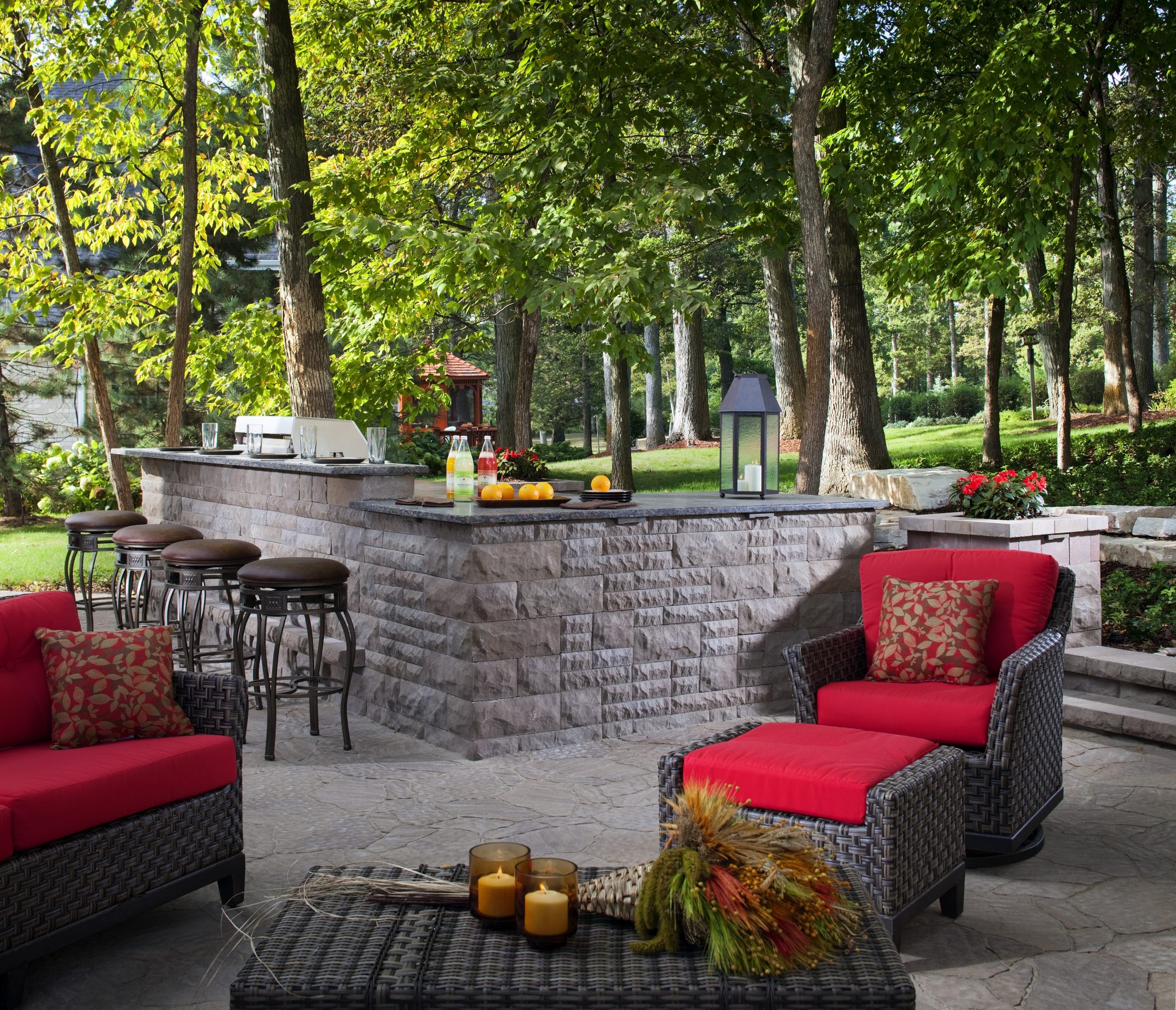
4. Bold Fabric Patterns
Choosing bolder patterns for textiles is a hot trend both indoors and out this year, which means it is time to liven up your outdoor living area with floral patio cushions and outdoor rugs with bold patterns. Even your patio curtains can get in on the action with geometric shapes or hugely popular floral patterns.
If your patio design budget is not quite large enough to recover or replace all of your textiles, you can still stay on trend with cloth napkins or tablecloths in bold, floral patterns.

5. Ultra-Violet
Ultra-violet is the Pantone Color of the Year, which means you are going to start seeing this uplifting hue in fashion design, furniture, graphic design and just about everywhere else. This is sure to include plenty of folks painting their patio furniture purple, adding pops of color with violet accents, and updating their patio textiles, including cushions, curtains, rugs and table linens.
To capture two patio trends at once, why not opt for a bold, floral pattern that includes ultra-violet or a similar hue? This is the perfect way to liven up your outdoor living areas and create inviting spaces for your family and guests to enjoy.
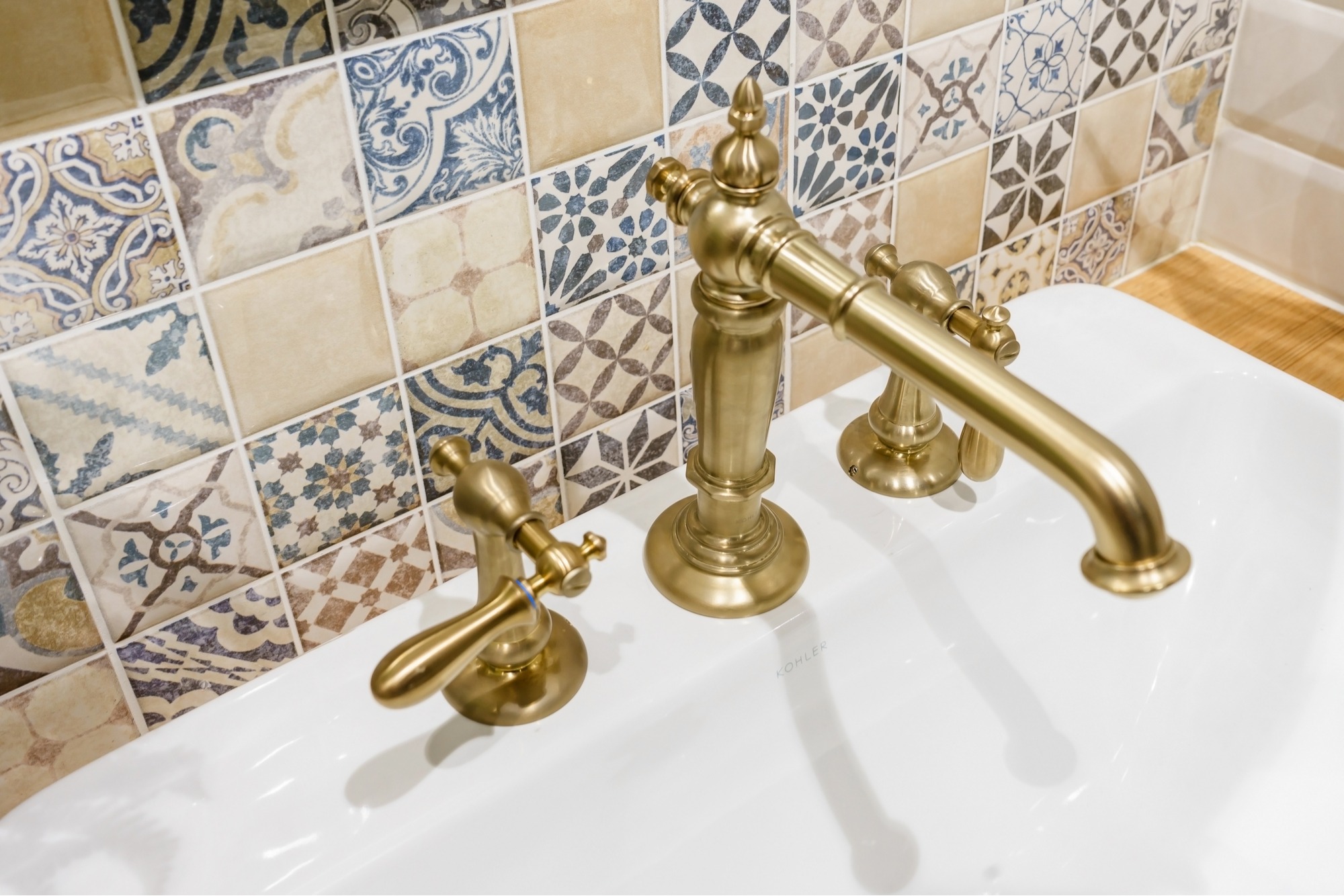
6. Gold and Brass
We have all grown accustomed to stainless steel appliances and brushed nickel or oil-rubbed bronze fixtures, but millennials are bringing brass back in a big way. This year, expect to see more brass fixtures in bathrooms and kitchens, more gold-toned mirrors hanging on walls, and more gold-tone or brass light fixtures both indoors and outside.
As mid-century modern furnishings started regaining ground over the last several years, we probably should have all seen this one coming. Well, now this gold and brass trend is becoming well established and will not be going out of style anytime soon. So, if you are in the market for new fixtures for your outdoor kitchen or an exterior bathroom, consider going bold with brass. Another option for including this patio trend in your outdoor living space is to opt for gold-tone or brass light fixtures or ceiling fans.
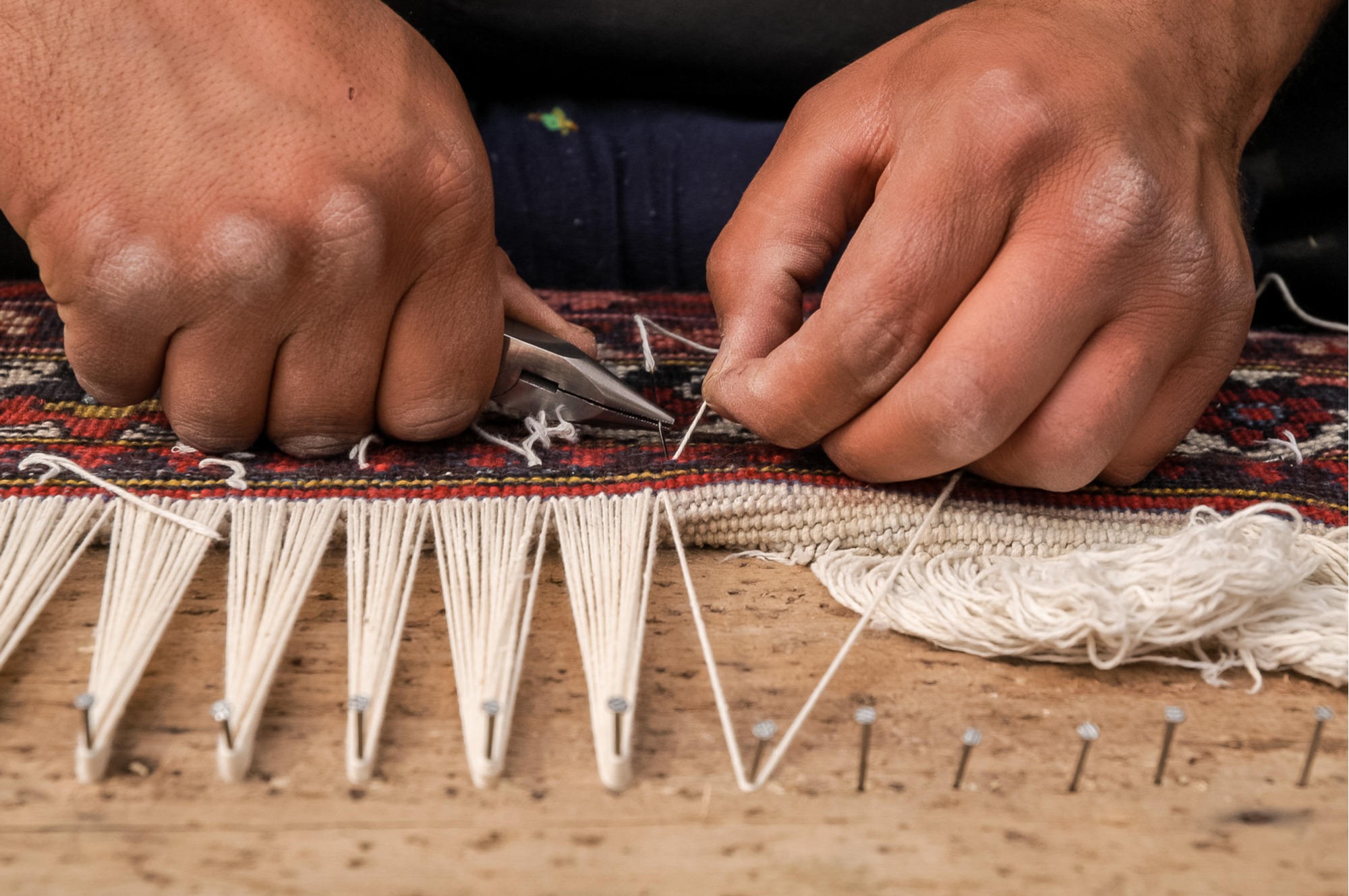
7. Handmade Pieces
We can give at least partial credit to the millennials for this trend as well, since they are a generation of makers and value the uniqueness and simplicity of artisan-crafted goods. While appreciating handmade pieces is not solely a characteristic of millennials, they are the newest generation of homeowners and, therefore, are helping to shape design trends and the features current homebuyers are seeking out.
You can incorporate this growing trend with a hand-hewn mantel over your patio fireplace, a hammered copper sink made by a local crafter for your outdoor kitchen, a handwoven patio rug, or a locally crafted light fixture to hang over your outdoor dining room table.
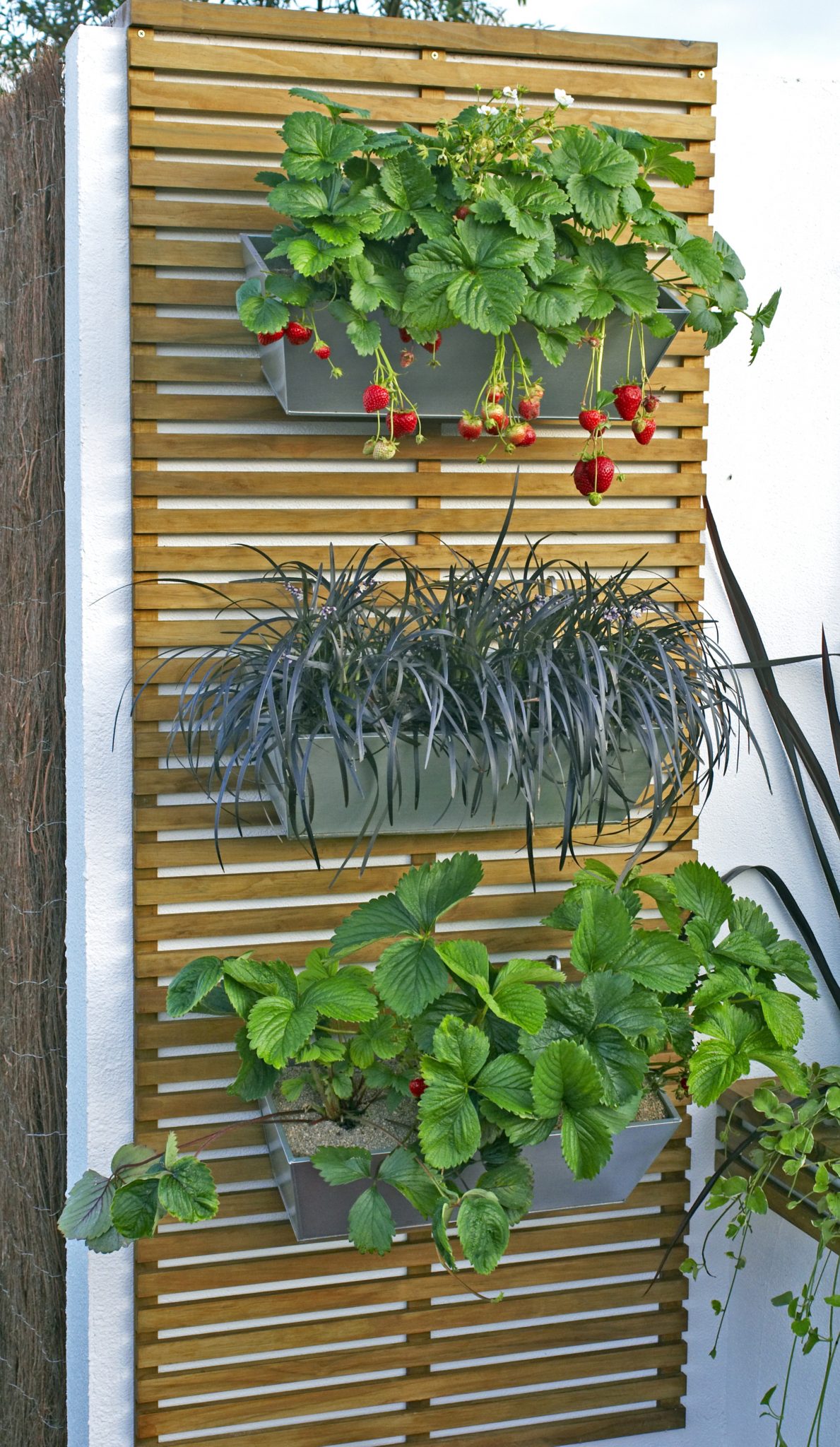
8. Growing Food in Containers
Backyard gardens are nothing new and have always been a big part of landscaping trends. Growing your own food allows you to know exactly how it was grown, what was used and where it came from. It also allows you to be more connected to your food, to teach your children about growing food and to eat locally.
There are two main things affecting this trend and moving at-home food gardens into containers: a growing interest in healthy eating and a growing population of homeowners living in smaller houses or multi-family buildings. This means that more folks are becoming interested in growing their own food organically and without pesticides and that many folks have limited space for growing this food.
Container gardens allow you to grow food plants on a balcony, on your windowsill or on your patio. This is ideal for folks with limited garden space and for people who want to grow just a small amount of food in a garden conveniently located just outside of their kitchen on their patio.
To get in on this patio trend, choose colorful pots that complement your overall landscape design and start with some easy-to-grow options that do well in containers, such as tomatoes, green peppers, basil, mint, oregano or strawberries.
If you are interested in landscaping trends from previous years (i.e. 2017, 2016, 2015, 2014, 2013), we have them listed below:
Landscaping Trends (2017)
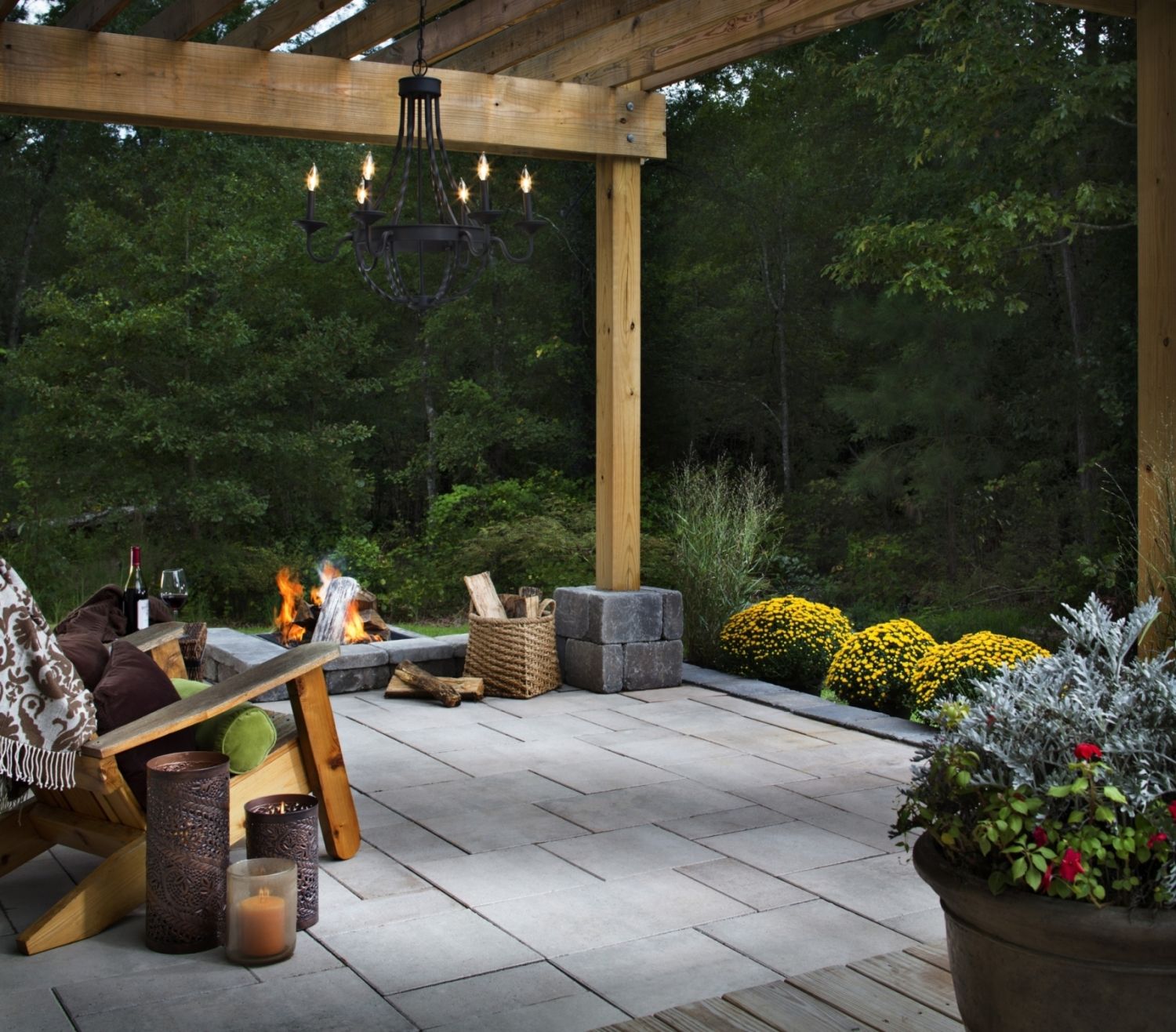
Southern California landscaping trends over the last several years have leaned heavily towards eco-friendly, low-water options that help us lower our environmental impact. Our ongoing drought and an increasing awareness of global warming and the need to conserve our natural resources have significantly influenced these trends.
With this move towards greener landscaping choices, we have seen a growing movement of homeowners replacing natural grass lawns with artificial turf, expanding their no-water hardscapes with paving stone patios, and opting for drought-tolerant, native plants when updating their landscapes.
This movement is so strong and ongoing that it is difficult to even call it a landscaping trend at this point, since it has become an integral part of the SoCal lifestyle. With this in mind, we thought it might be a good idea to look at a few other landscaping trends we expect to see in 2017.
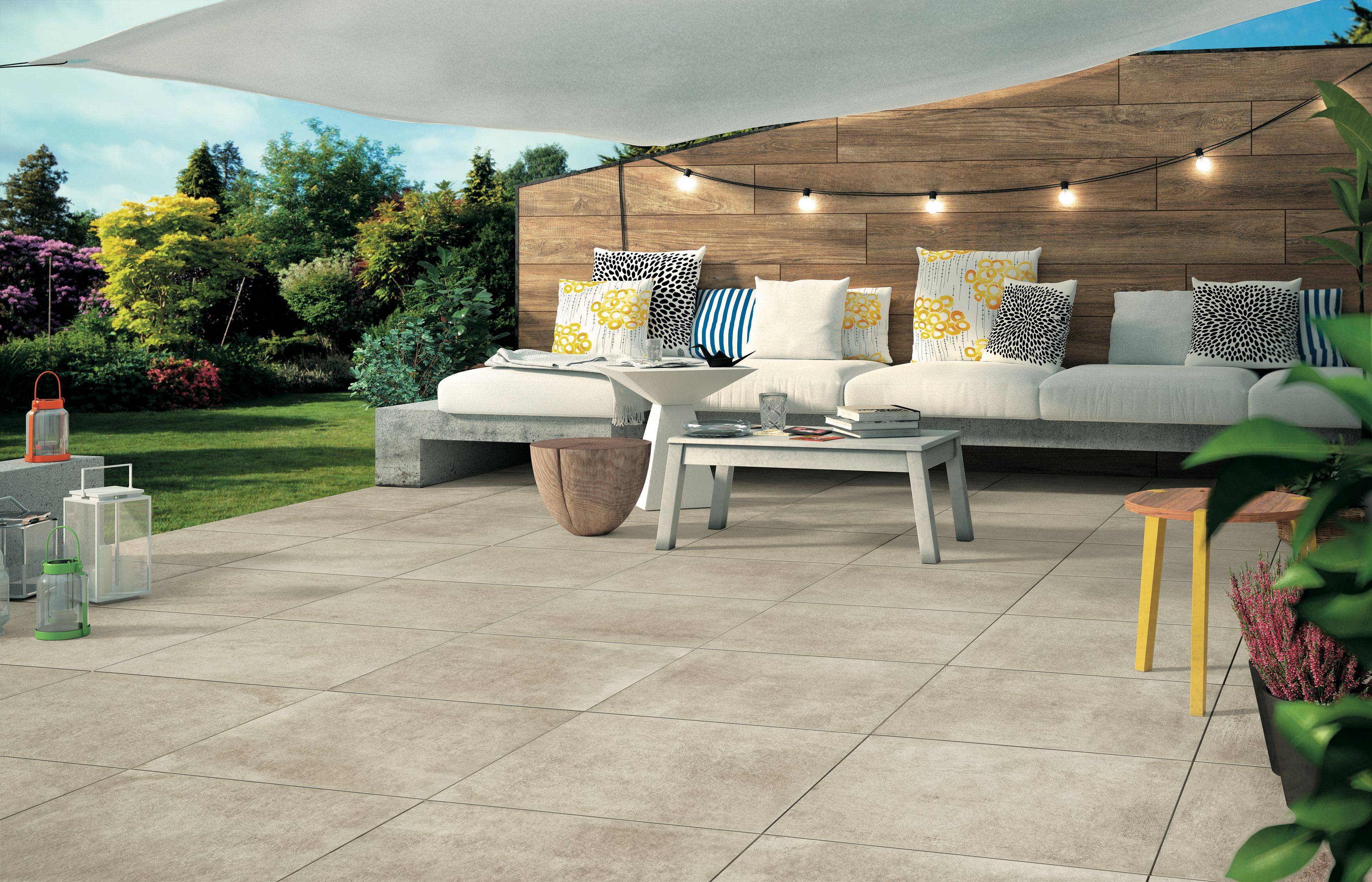
1. LED Lighting Indoors and Outdoors
It was not that long ago that we learned about the benefits of compact fluorescent lamps (CFLs) and started replacing our incandescent light bulbs with this eco-friendlier option. Well, now we have moved on to an even better option. The hot trend in both indoor and outdoor lighting is now LED (light-emitting diode) bulbs, which last longer and use even less energy.
The cost of LED bulbs is higher than CFLs, which has scared folks off in the past. However, now that LEDs have become more commonplace and more people understand the benefits of making the switch, folks are starting to replace their CFL and incandescent bulbs with LEDs as they burn out.
For landscape lighting, this trend includes switching to LED pathway lights, motion-detecting security lights, porch lights and decorative lighting. Solar-powered LEDs are particularly popular – both for the energy savings and for the ease of placing lights almost anywhere without the need to run electrical lines to the area.
If you need some inspiration for your landscape lighting design, here are four must-read posts:

2. Expanding Outdoor Living Areas
Designing spaces for outdoor living and entertaining is certainly not a new thing, but more people are now looking to expand their outdoor living areas and enjoy more time outside. We expect this to include expanding patio and deck space to include outdoor living rooms, dining rooms and even sleeping areas.
The growing popularity of outdoor entertaining is part of the impetus behind this trend, which means these expanded spaces will likely be filled with comfortable seating, layers of texture, patio bars and other features that make guests more comfortable and make hosting outdoor parties more convenient.
If you are considering expanding your outdoor living areas, here are some helpful tips:

3. Outdoor Kitchens
The increase in the popularity of outdoor kitchens is certainly not a new trend, but we are seeing more homeowners going beyond built-in barbecue grills and under-counter refrigerators to include additional features. We are seeing more of today’s outdoor kitchens having expanded bar space with seating for guests, ice makers, blenders, dishwashers, outdoor pizza ovens and warming drawers.
If it is time to update or expand your outdoor kitchen, read these posts for inspiration:

4. Gravel Driveways, Walkways and Outdoor Living Areas
Gravel is becoming an increasingly appealing option for homeowners looking for low-maintenance, no-water, affordable solutions. Available in many different sizes and colors, gravel can successfully be used for a variety of landscaping projects, including walkways with or without stepping stones, driveways and outdoor living areas.
Gravel is a great harmonizing material to use around a paving stone patio or deck, particularly if you have older concrete patios or walkways that have not yet been upgraded to paving stones and need to be incorporated into your overall landscape design.
For more ideas about how to use gravel in your landscaping, check out Rock Landscaping Ideas: How to Use Rocks + Gravel.

5. Sports Fields and Courts
Adults have busy schedules that make it difficult to get to the gym or meet up with friends for basketball games or an afternoon of hiking. Children, on the other hand, may have more time, but much of it is now spent indoors interacting with gaming consoles, tablets or other devices. These are just some of the reasons folks are finding it more difficult to stay fit and the obesity epidemic continues to grow. With childhood obesity being of particular concern, more parents are looking for ways to encourage their kids to get more exercise and participate in more active play.
One way they are accomplishing this is by making sports and active play more accessible and less time consuming by building sports fields and game courts into their backyard landscaping. With options right in their backyards, it is easier and more convenient for both adults and children to find the time and desire to spend more time outdoors being active.
Here are some great ways to incorporate active play or sports areas in your landscaping:

6. Peaceful Retreats
2016 was a tough year for many people. We had an unusual number of deaths of celebrities and iconic figures, terror attacks around the world, an increase in racial tensions across the nation, and an election that divided friends and families.
Moving into 2017, people are looking towards rejuvenation and renewal, as well as connecting more with nature and each other. We could all use a little stress reduction right about now, which is one reason we expect to see more homeowners transforming their outdoor living areas into peaceful, refreshing retreats.
Here are a few posts to help you turn your backyard into a relaxing retreat:
Landscaping Lighting Trends (2017)
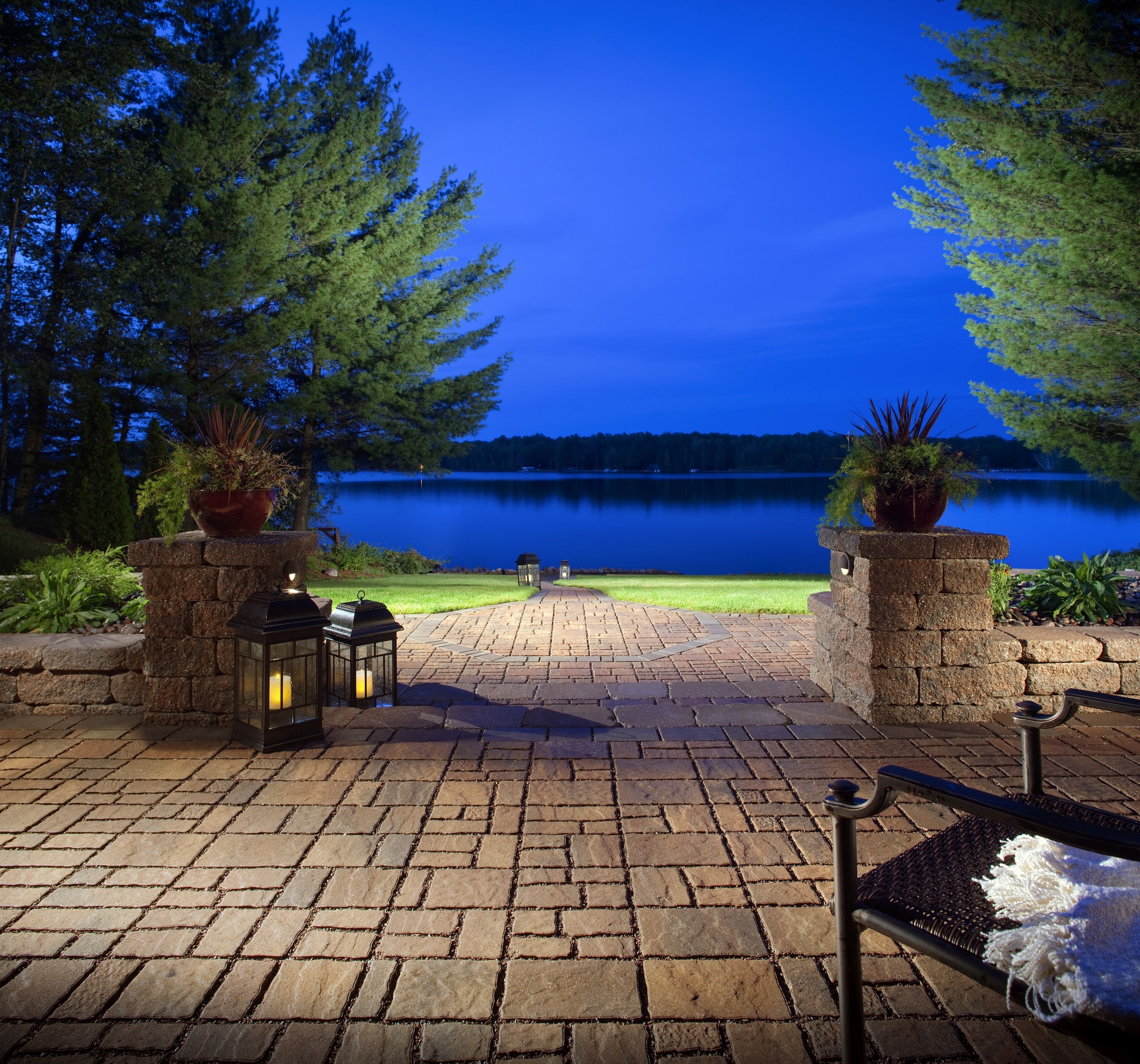
Whether you just need to replace some old pathway lights or it is time to completely remodel your entire backyard, it is important to know what is going on in the world of landscape lighting and what new options might be available to you.
For ideas and inspiration, check out these seven 2017 landscape lighting trends that are changing the way homeowners think about outdoor lighting design.
1. LED Light Bulbs and Fixtures
This landscape lighting trend actually started a couple of years ago, but advances in LED technology have significantly increased the popularity of this option. LED light bulbs use less energy than older options, have much longer lifespans, and now come in an array of warm and cool light color choices that work for a wider variety of projects.
Homeowners are choosing LED lights for their landscape lighting designs to conserve energy, save money and avoid changing light bulbs every few years. It should be noted that LED bulbs and fixtures incur a higher upfront expense when compared to most other options but save money over time due to the reduced energy usage and longer lifespan of the bulbs.

2. Simulating Moonlight:
Simulating the glow of a full moon over your landscaping is a beautiful outdoor lighting trend that has the look of natural light. While it clearly can be used to set a mood and create a relaxing environment, it can also be used to increase security around your property and even to highlight landscaping features in a more natural-looking manner.
To create this full moon effect for your landscape lighting, it is best to install your down lights at least about 20 feet above the ground in trees or on structures. If mature trees are available for this application, you can achieve a dappled moonlight look by installing the lights high in the tree and allowing the soft light to come down through the branches to create shadows and highlights for a more natural effect.
Proper beam spread and glare guards are essential to achieving the natural look of moonlight, so you will most likely need the assistance of a professional lighting designer or installer to get the look you want.
3. Higher-End Fixtures for Porch Lights, Patios and Pathways
Homeowners are dividing their landscape lighting budgets a bit differently these days to allow for more money to be spent on the fixtures their guests will see. For example, front and back porch lights, fixtures on covered patios and visible pathway lights are getting more attention.
These are the lights that will be most visible when they are enjoying their outdoor living areas and that are sure to be noticed by guests. Therefore, homeowners are spending a bit more on these lights to get higher-end options that are more attractive and complement their overall landscape design.

4. Underlit Hardscapes
Underlighting hardscapes gives a modern, attractive look to landscape lighting. Using this lighting design can increase safety by lighting steps when down lights are added to wood, brick or paving stone stairs and it can provide needed task lighting, as well as enhanced visual appeal, when used under the ledge of counters in outdoor kitchens.
Underlighting can provide a particularly dramatic effect when added to paving stone walls, beneath paving stone benches and around fire pits, which adds visual interest even when the fire feature is not in use.
5. Task Lighting
Task lighting, as mentioned above, goes well beyond outdoor kitchens, particularly with the growing trend of installing lighting that can be both functional and an attractive part of your overall landscape design. Task lighting for barbecue grills and prep areas in patio kitchens is nothing new, but homeowners are now transforming more space in their yards to usable outdoor living areas where they can work, dine, watch TV, read and play.
As we begin to spend more time outdoors, we need to customize these spaces to better suit our needs. This could mean ample lighting to make our backyard gyms and sports courts safe, ambient lighting for an outdoor dining room, or a warm glow by which you can read or work on your laptop. The most important aspect of this growing landscape lighting trend is that task lights are seen as more than functional additions and are being incorporated into overall landscape design as an attractive feature unto themselves.
6. Lighting Water Features from Within
Homeowners are making their water features even more of a focal point by illuminating them from underneath the water. This includes up lights positioned to highlight fountains, strategically located fixtures that add accent lighting just where a waterfall hits the pool, illuminating a waterfall from below or adding a soft glow to a pond.
Installing landscape lighting in water features requires a particular level of acumen so, while some outdoor lighting projects can be accomplished as a do-it-yourself backyard improvement, this is not one of them. You really must enlist the help of a professional who understands the electrical intricacies of installing lights under water to make sure this project is completed safely.

7. Dark Sky Friendly Lighting
Many municipalities are adopting Dark Sky initiatives or outdoor lighting ordinances that regulate when and how you can light your yard. Some cities, like San Diego, only allow certain types of necessary lights to be illuminated outdoors between the hours of 11:00pm and 6:00am, and many require light fixtures to be shielded to avoid glare and light being cast outside of the intended lighting area.
Light pollution can keep city dwellers from gazing at the stars in their backyards, but it can also have far more serious implications, such as the detrimental impact it can have on sea turtles, which results in millions of baby sea turtles dying every year because they cannot find the ocean.
Because of the negative effects on wildlife and the reduction of quality of life caused by light pollution, many people are implementing Dark Sky lighting recommendations in their landscape lighting design – even if they do not live in an area that legally requires it.
2017 Landscape Lighting Trends: Getting Started
If you have questions about outdoor lighting or are ready to start working with a landscape lighting installer to design your perfect lightscape, contact Install-It-Direct today at (858) 925-3000.
Additional Landscape Lighting Trends and Information
Landscaping Trends (2016)
It is always fascinating to see how landscaping trends change throughout the years.
What once was considered a must-have landscaping feature eventually falls out of fashion while other trends begin to take hold.
What is in or out in any particular year is at least partially shaped by the health of the economy, the media, technological advances and — in Southern California — by just how bad our state of drought is that year.
In recent years, landscaping trends across the country have also been influenced by new financing programs, the growing movement towards greener lifestyles and an increasing interest in growing our own food.
Here are five Southern California landscaping trends we expect to see in 2016.
1. More Natural Grass Lawns Replaced with Low-Water Alternatives
This trend has been growing for the last several years, so it is no surprise that we can expect to see more natural grass lawns disappear in 2016.
Southern California is no stranger to drought, but residents are taking our current drought very seriously and are making significant changes to their landscaping in an effort to do their part to conserve water.
Many municipalities in California met or exceeded their water-conservation goals in 2015 but, fortunately, this has not taken away from SoCal residents changing our lifestyles to keep up this great work.
As we continue to take water-saving steps across the state, we can expect to see fewer natural grass lawns and more low-water grass alternatives, such as artificial turf, gravel, paving stone patios and mulch.
If you are interested in redesigning your landscaping to save water, here are three previous posts to check out:
2. More Backyard Vegetable Gardens and Urban Farming
Older homeowners may have been maintaining a backyard vegetable garden for decades now, but younger homeowners are just getting in on this aspect of sustainable living and are interested in learning how to grow their own food.
This is coupled with the ongoing, general movement towards healthier diets and a focus on eating local, organic products.
We expect these two trends to come together in 2016 and result in an increasing number of homeowners planting fruit trees, growing vegetable gardens and building chicken coops.
Since newer homeowners are often more interested in sustainability and less interested in having large, natural grass lawns to show off as status symbols, they are even more likely to use their yards for more functional purposes.
If you are interested in joining this growing movement and try your hand at a little urban farming, here are some earlier posts that you are sure to find useful:
3. A Focus on Low-Maintenance Landscaping
Southern Californians are busier than ever.
We have had more time to recover from the recession, are back to work and are interested in making the most of our free time.
Between work, school, errands, chores and family obligations, there is not much of this coveted free time to go around.
But we want to spend time with family, go on road trips and finally find the time to read that novel that has been sitting on the nightstand for a year.
This requires cutting back somewhere, and cutting back on work, school, grocery shopping, or taking care of our children or aging parents is not really an option.
This means that we need to find ways to cut back on chores, and switching to low-maintenance landscaping is one of the most effective ways to do this.
For example, replacing your natural grass lawn with synthetic grass can immediately save you hours every month by removing the need for the regular watering, mowing, edging, weeding, fertilizing and aerating required to maintain conventional lawns.
This type of time-saving transformation can allow you to spend less time taking care of your yard and more time enjoying it.
If you would like to save time with low-maintenance landscaping, here are just a few of our previous posts you might find helpful:
4. More HERO- and Ygrene-Funded Home Improvement Projects
2015 was a great year when it comes to homeowners taking advantage of special financing programs to help them make eco-friendly improvements to their homes and properties.
The Home Energy Renovation Opportunity (HERO) program and Ygrene Works both provide funding for homeowners interested in making home improvements that conserve water, make their homes more energy efficient or make their properties more sustainable.
The loans are not dependent on credit scores, payments are added to your property tax bill, and you can borrow money with a low, fixed interest rate and no money down.
You can then use the money to update an antiquated air conditioning system, replace your water-wasting grass lawn with artificial grass, or install solar panels.
We expect to see this trend grow and see more home improvement projects financed through HERO and Ygrene simply because of the growing awareness of these programs as an option.
Install It Direct is proud to be a part of this movement towards water-saving landscaping as an approved contractor for artificial grass and paving stone projects funded through these programs.
To learn more about these special financing programs, check out these earlier posts:
5. Pet-Friendly Landscaping
The 2016 Garden Trends Report published by the Garden Media Group states that dogscaping will be a growing trend in 2016, and we could not agree more.
We think it is largely due to the general movement towards paying more attention to the chemicals we come in contact with each day, eating organic and local, and generally being more aware of how our lifestyle affects our overall health and longevity.
Most homes in the U.S. have at least one pet in them, and most of us think of our pets as members of the family.
So it makes sense that our desire to limit our family’s exposure to chemicals, improve their diets and attend to environmental factors that impact their health would also extend to our pets.
In terms of pet-friendly landscaping, this means removing plants that are toxic to dogs or cats, switching to organic lawn care to avoid exposure to chemicals, providing our pets with safe and comfortable spaces, and ensuring that our pets are as safe as possible around potentially dangerous landscaping features, such as water features or fire features.
If dogscaping is a trend you intend to get it on in the coming year, here are some previous posts that you might find helpful:
Landscaping Trends (2015)
The world of commercial and residential lawns is rapidly changing, particularly in drought-ridden Southern California where every drop of water counts.
While most people still want to enjoy the lush, verdant look of natural grass lawns outside of their homes, office buildings and local shopping centers, most also understand that the old way of doing things is no longer working for our state.
We have to make some big changes to bring our water usage under control and get California on the right track to balance our desire for green spaces and our need to conserve water in a manner that is sustainable long term.
Water agencies across the state are reporting that homeowners are doing a good job of adhering to water use restrictions and making a conscious effort to decrease their residential water usage.
This is a good sign and gives all of us greater hope for a future in which our regularly occurring droughts are not as worrisome.
Southern California homeowners, business owners and commercial property owners are stepping up to the plate to reduce water usage and are changing the way they view natural grass lawns.
This, in turn, is leading to new landscaping trends, particularly when it comes to how we adorn the outdoor spaces that have traditionally been home to expanses of conventional, water-hogging natural grass.
Read on to learn more about the top four Southern California lawn trends for 2015.
1. Smaller Natural Grass Lawns
Many home and business owners who are not quite ready to give up their natural grass lawns are downsizing them to save water and make them more manageable.
Smaller lawns still require thousands of gallons of water each year — as well as mowing, weeding, aerating and fertilizing — but for every 100 square feet (10’x10′) of lawn you remove, you can expect to save an average of about 62 gallons every time you water your lawn.
Smaller lawns also mean less time spent caring for your yard and more time to partake in more pleasurable pursuits, like spending time with your family or entertaining friends.
As American lawns shrink, homeowners are finding other ways to use the space to make their yard more visually appealing or more functional.
Some are planting vegetable gardens, installing chicken coops, putting in fermentation gardens or planting fruit trees and using the space for urban farming to grow food for their families.
Others are installing borders or island flower beds to shrink the size of their lawn and plant native species that require little water and care to thrive.
Another popular option is decreasing lawn size to increase hardscapes, which results in properties that are more functional and require much less water.
One example is removing some or all of the lawn that runs along the driveway to widen the driveway and increase guest parking space.
Another example is removing some of all of a back lawn to install a paving stone patio for outdoor living and entertaining.
This type of home improvement also provides a foundation on which you can install an outdoor kitchen or patio fireplace to enhance the living space even more.
Those who want to reduce their lawn size and add more hardscapes to their yards but do not have the budget for a patio or driveway expansion have plenty of other options, including adding paving stone walkways, river rock sitting walls or a fire pit.
2. Eco-Friendlier Natural Grass Lawns
Natural lawn options that require less water and care have been widely available to consumers for more than a decade, but it is only recently that people are becoming more aware of this option and choosing it over conventional grass options more frequently.
There are several options on the market, so I will just use one example to give you an idea of what you can expect from some of the most popular eco-friendlier lawn products.
Eco-Lawn is a lower-water grass seed that has been around since 1998 and is made up of a combination of fescue grasses.
This particular product, and others like it, are slow-growing grass options that are drought tolerant and able to grow in sun or shade.
Irrigation requirements are generally at least 50% less and, in some cases, can be significantly lower when compared to conventional grass options.
According to the Eco-Lawn website, this particular variety can thrive in Southern California with as little as 12,400 gallons per year for a 1,000-square-foot lawn.
Because they grow slowly, you can also mow them less often and, if you prefer a natural look, you may choose to mow them rarely or not at all.
Less water and less mowing is a tempting combination and is certainly much better for the environment.
Of course, these lower-water grass options still require more water and care than many of the available natural grass alternatives, but these eco-friendlier grasses provide a viable option for folks who are not quite ready to move towards grass-free landscapes.
Some homeowners and business owners are choosing to completely replace their current, conventional lawns with one of these eco-friendlier options, while others are choosing to overseed their current lawns with eco-friendlier grass seeds.
By regularly overseeding your lawn with a more environmentally friendly option, such as Eco-Lawn, your lawn will eventually convert to a lower-water, lower-maintenance area of natural grass over a period of years.
In the meantime, you will still need to water and mow your lawn as usual.
3. Chemical-Free Lawn Care
The move towards chemical-free lawn care has actually been going on for years, but it continues to grow and is definitely still a top trend worth mentioning.
Organic fertilizers, natural pest control methods and chemical-free herbicides are a growing market as more lawn owners recognize the impact chemical-laden lawn care products have on the environment.
Most organic and natural lawn care products are applied in a manner similar to their conventional counterparts, which makes switching to these healthier options easier and more convenient for those managing natural grass lawns.
Making the switch can be frustrating at first, since organic products sometimes take longer to have the same effect, but rest assured that your lawn will continue to improve over time as it responds better to chemical-free management.
One of the reasons the movement towards natural and organic lawn care continues to grow is that the demand has brought more of these products to the marketplace.
This means wider availability, more options from which to choose and prices that are more in line with conventional products.
4. Replacing Natural Grass Lawns with Low-Water Alternatives
Eco-conscious homeowners and commercial property owners began replacing their natural grass lawns with low-water alternatives years ago, but external forces are now encouraging folks to take on this home improvement project in increasing numbers.
The two programs that are among the biggest influencers in Southern California are water rebate programs and the Home Energy Renovation Opportunity Program (aka the HERO program).
Water rebate programs, such as those offered by the San Diego County Water Authority and the SoCal Water$mart Turf Removal Program, offer attractive incentives, including rebates starting at $2.00 per square foot of natural grass removed offered by the SoCal Water$mart Turf Removal Program.
The HERO program is also making low-water landscaping more accessible to homeowners by offering low, fixed interest rates and flexible payments on financing to cover the full cost of purchasing and installing certain energy- or water-efficient products from approved contractors.
This includes artificial grass installed by InstallItDirect, which is a low-maintenance option that offers you the look and feel of a natural grass lawn without the constant watering, mowing, weeding, fertilizing and aerating required when managing a conventional lawn.
Whether or not they pursue rebates or special financing, property owners are getting in on the growing trend of replacing their lawns with low-water alternatives to natural grass.
More than ever, they are choosing synthetic turf to meet their need for inviting, green spaces that never need watering and are easy to maintain.
Property owners are also choosing other low-water and no-water grass alternatives to use with or without artificial grass.
Popular lawn-replacement choices include native plants, gravel, mulch, wood chips and stonecrop.
Eco-Landscape Trends (2015)
If you are considering making some eco-friendly home improvements this year, check out this list of 10 of the hottest eco home and landscaping trends for 2015!
1. Energy Audits
Even just a few years ago, most homeowners did not know what an energy audit was.
Now it is a common topic of conversation and it is not surprising if cocktail party conversation includes at least one person asking if you have had one yet.
An energy audit determines your home’s energy usage, shows you where you can save money by conserving energy and includes recommendations for home improvements that can significantly lower your carbon footprint and your energy bill.
In the San Diego area, customers of San Diego Gas & Electric (usually just called SDG&E by locals) can get a free in-home energy survey by calling (800) 411-7343 to schedule an appointment with one of their Customer Energy Specialists.
There are also professional energy auditors and green home consultants who can assist you in determining how best to lower your energy usage and save money.
This eco home trend is an easy one that anyone can do, and for most homeowners in the San Diego area, they can even do it for free with a basic survey from SDG&E.
Since it can save you money and help you achieve your eco-living goals, this one should definitely make its way to your to-do list for 2015.
2. Tankless Water Heaters
This eco trend has actually been going on for a few years now, and it is still going strong.
Tankless water heaters are much more energy efficient than storage models and are commonly used in new construction, particularly in higher-end homes.
Plenty of homeowners are also including them in remodels or swapping out their old tank versions as a solo home improvement project.
While a tankless water heater can significantly cut your energy usage and your utility bills, it is important to note that they are also much more expensive then storage tank models and that installation costs can vary widely.
This means that although you are saving money each month on your energy bills, it could take a decade — or even two decades — to fully realize the cost savings and have the savings balance out with the cost of purchasing and installing your new water heater.
Because of this, some homeowners choose to hold off on this eco-friendly home improvement project until their current water heater requires replacement.
If you need to spend a few hundred dollars to replace your water heater once it no longer functions properly, it is much easier to justify spending a few hundred more to splurge on a tankless water heater for your home.
3. Low-Flow Toilets and Shower Heads
Low-flow toilets first hit the scene in the 1990s, but the ill-functioning options that first came on the market had homeowners avoiding them at all costs.
Over the years, low-flow toilets have come a long way and are now quite good at their job.
Some can be quite pricey, but there are economical options that make this easy home improvement a possibility for any homeowner.
You can even find options with two flush choices — one for liquid waste and one for solid waste — at The Home Depot for less than $200.
Low-flow shower heads can be purchased for as little as $20 and, depending on the age and flow rate of your current fixture, they could reduce your water usage by as much as 60%.
And do keep in mind that when it comes to reducing the water used when you shower, that means lowering your water bill overall, but also lowering your energy bill, since you will using less hot water.
If your current shower heads were installed before 1992, you should definitely put this simple home improvement project on your to-do list.
After 1992, government regulations required shower heads to become significantly more efficient with a flow rate of 2.5 gallons per minute or less.
But even if your shower head was manufactured after 1992, it is likely that you can find a new one that is even more efficient but still provides a satisfying shower.
Low-flow toilets and shower heads are a common feature in new construction and remodels and should definitely be part of any home improvements you have planned for the year.
4. Permeable Pavers
Permeable pavers allow water to percolate down into the soil, which allows for better storm water management and the potential to harvest water for residential or commercial use.
Paving stones have seen a recent increase in popularity due to their durability, beauty and ability to increase the value of a home, but permeable pavers are particularly intriguing for eco-minded homeowners looking for home improvement options that benefit both the homeowner and the community.
According to Belgard, which offers permeable pavers and paving stones that can be installed to allow water drainage, these are some of the ways installing permeable pavers can be beneficial:
- Allow water to find its way to the ground to replenish groundwater supplies
- Assist rivers, streams and ecosystems in self-sustainability
- Filter water to improve water quality
- Reduce loss of water through evaporation
- Reduce amount of water used for landscaping
- Reduce potential for erosion
The City of Berkeley installed its first permeable pavers in 2014, and innovative community projects are testing landscape and streetscape designs that include permeable pavers to see how viable this might be for larger projects that will have a more significant impact on reducing and improving our water usage.
This one is definitely a growing trend that we will see much more of in 2015.
5. Solar Panels
For years now, solar panels have been the go-to home improvement project for eco-minded homeowners who have decent home improvement budgets.
This popular choice can help you save significantly on energy costs and can seriously reduce your home’s carbon footprint, but they can be expensive to purchase and install, which means you may not see those savings for some time.
However, as we continue to recognize the need for all of use to get serious about saving the planet, our federal and state governments are offering some enticing features to encourage more homeowners to go the solar route.
In fact, you can deduct 30% of the cost of your solar system the next time you do your federal taxes, and California offers a variety of incentive programs that could apply to you.
Whole-house solar systems are best left to the professionals — and you can even lease them with no money down in most areas of California — but if that is a bit more than you are ready to do, you might also consider a simple, do-it-yourself installation of inexpensive solar panels you can pick up at stores like Harbor Freight.
While these solar panels are not going to power your entire home, you could use them to power landscaping features, your tool shed or other features, which will still allow you to reduce your energy usage and save some money.
An even easier way to switch at least some of your energy usage to the solar variety is to opt for affordable, solar pathway lights, solar-powered pumps for your ponds and fountains, or a solar oven for outdoor cooking.
6. Energy Star Appliances
If you are looking to remodel your kitchen or upgrade your laundry room, appliances with an Energy Star rating are definitely the way to go.
These eco-friendlier refrigerators, washers, dryers and dishwashers help you reduce your energy usage and save money on utility bills.
If you replace major appliances with these energy-efficient options, you can even earn tax rebates that make these simple home improvements even more enticing.
7. Swapping Out CFLs for LEDs
Compact fluorescent light bulbs (CFLs) were the darling of the green-living movement for many years, but now these energy-efficient bulbs are being replaced by something even greener.
LED light bulbs will keep on shining much longer than CFLs, and they do it while using even less energy.
LEDs were not all that appealing in years gone by, but light bulb technology has come a long way and LEDs are now finding their way into the homes of eco-minded homeowners across the country.
8. Low-Water Landscaping
This growing trend actually started before our current drought, but our extreme drought status has definitely put low-water landscaping at the top of the priority list for residential and commercial properties.
Since Southern California seems to be an almost constant state of drought, landscaping that requires little or no water is an excellent long-term solution that every property owner should consider.
Here are just a few examples of how easily you can conserve water with landscaping that is more environmentally responsible:
- Install an automatic drip system for more efficient water delivery.
- Choose native plants that thrive in your area with little water.
- Expand patios and walkways to include more hardscape in your landscape design.
- Replace natural grass lawns with gravel, wood chips, native plants or artificial grass.
9. Energy Monitoring Systems
A one-time energy audit provides you with a snapshot of your home’s energy usage, but a home energy monitoring system can provide you with data in an ongoing manner to allow you to quickly identify energy wasters and continuously monitor the effectiveness of home improvements and lifestyle adjustments.
Options start with the portable Kill A Watt, which can be purchased for around $50 or less and can be carried around to test your appliances and see how energy efficient they really are.
More serious energy monitors that are hardwired into your home and really produce some great, usable data that can help you completely change the way you use energy in your home start closer to $200 and go up from there.
If you think you might be wasting energy around the house or are concerned about your overall carbon footprint, this is an easy way to set up ongoing monitoring and an affordable, eco-friendly item to put on your list of home improvements to complete this year.
10. Urban Farming
This particular trend of dedicating a significant portion of their property to food production is especially popular with younger homeowners, but homeowners of all ages can get in on the action with something as small as a windowsill herb garden or as large as an urban farm that takes up most of their backyard.
Eco-minded homeowners (and renters) recognize the significant, negative impact mass food production and shipping foods around the world to end up on our grocery store shelves have on the environment.
To help reduce the energy, water, waste and pollution that comes with purchasing foods at major grocery stores, green-minded folks work hard to buy local and grow or raise at least some of their own food in their backyard or front yard.
Further Reading:
Landscaping Trends (2014)
It’s hard to imagine the new year is right around the corner.
Yet there it is: less than two months away and the 2014 trend reports are coming fast and furious.
Whether you’re looking to make a change in your outdoor decor and gardening habits, or are just curious as to what’s coming “next,” know that this upcoming year is all about “balance” “nature” and “double-duty.”
Read on because we’ve combed the Internet to bring you the latest and greatest in what’s hot in gardening and outdoor living for 2014:
Out-of-the-ordinary outdoor accessories
According to the Garden Media Group’s 2014 Garden Trends Report, consumers are spending more leisure time outside and so are “decorating” their gardens and yards with more garden art, tabletop fountains, outdoor chandeliers, and unique planters and accessories like bird feeders and candleholders.
Other popular decor items include outdoor rugs, wall hangings, and lamps. This year, it’s all about creating an inviting and livable space and bringing interior decorating outside. Search Durable Decor for some inspiring ideas.
Emphasis on nature
Greener lifestyles have connected people back to the land, and increased the focus on composting, planting more trees, and growing flower and plant habitats that sustain and shelter crucial creatures such as birds, butterflies, and bees. As Garden Media puts it, “People still want their outdoor spaces to look beautiful, but want to invest their time and money into high-quality, eco-friendly products with a smaller carbon footprint.”
Smarter gardens
High-tech (on the back-end) gardens are on the upswing, meaning that fire pits, water features, lighting, and shade structures/patio coverings can be controlled by smartphones or tablets.
Shapelier gardens
Although straight lines make harvesting easier and will never go out of style, geometric shapes like circles and triangles are currently in vogue, as are explosions of color in random patterns for the aesthetic thrill of it all. According to some sources, umbels, which are flower shapes with spiky stems topped by round clusters of blooms, will be especially popular.
Fermentation gardens grow
Driven by the increasing beverage industry use of/media focus on natural ingredients in cocktails and for brewing, more and more gardeners are considering fermentation gardens, which grow grains and grapes for beer and wine.
Superfoods go next level
Blueberries and kale are so 2011. Gardeners are also growing quinoa and Goji berries for home use. Superfoods some consider weeds because they grow wild include dandelion, lamb’s quarters, and nettle. Purslane is also a superfood “weed” that contains high levels of omega-3 fatty acids. So if you’re interested in superfoods, but find their high cost prohibitive, growing your own is way more affordable.
Something for everyone
Outdoor spaces do more double duty than ever – providing an oasis for mom, and a playground for the kids. More integrated design offering spots for games, outdoor dining, and relaxation is on the rise.
Native plants stay popular
Again, given the ever increasing focus on sustainability, many people are selecting native plants to grow and and some are even replacing their lawns with meadow-like designs.
You might also begin to see native plants used as more of an outdoor design element such as rows of natives planted to complement a stark modern setting.
Color is balanced
Although bold colors like cayenne, marigold, and oranges are being shown this year, the emphasis is pairing brighter colors with neutrals and a balance of color using corresponding hues – not necessarily one bold color palette. Popular color combinations include yellows and grays and tonal blues. Blue and white also stays on trend.
Urban farming focus
Urban Farming can mean everything from growing a fruit tree in the garden, growing your own vegetables and herbs in containers, or even keeping your own chickens – a surprisingly popular trend in all regions. Rooftop and terrace gardening is also increasingly becoming more of a thing.
Finally, it’s been reported that we like to to have our home grown greens close by while cooking – but in a stylish manner. Along those lines, hanging plants and herbs in macrame hangers in the kitchen is supposed to be the trend for 2014.
Outdoor furniture transitions
Outdoor furniture continues to be sold in more transitional and contemporary looks as the lines between indoor and outdoor living blur, especially in temperate climates like San Diego. Marrying formal design elements with comfort and modern lines is classic transitional and so function-friendly sculpted backs, seats and arms combined with clean design is hot this season – and probably will be for years to come.
Outdoor dining sets get bigger and better
There’s a big increase in deep seating seen for 2014, with outdoor furniture set lower to the floor and featuring deeper cushions, lending itself to more relaxation than traditional patio furniture. More versatile and casual deep seating groups are on the upswing with chat-height fire pits allowing people to gather around and talk, sectionals and expanding tables that can be customized for large dining groups. So this year? Think plush outdoor cushions and oversized outdoor seating.
More plant coverage
This trend has been called “more bud for your buck” and includes specimens that cover more ground in the garden and grow big and lush and act as natural weed suppressant.
Some cited examples include the begonia “lotto mixed,” which are twice the size of traditional begonias, and “busy lizzie” sunpatiens that grow to three times the size of normal busy lizzies and are mildew-resistent.
Shrubs return
Shrubs are back in vogue for providing borders because they’re reliable and easy to grow. Shrubs also define spaces and are incredibly low maintenance.
Outdoor lighting
There’s a lot of cool options for lighting on the market, especially as used to accentuate outdoor rooms as mentioned in the first trend listed above. This year, cordless, energy-saving lamps growing in popularity due to their money-saving features, and longer-life spans.
Outdoor lighting also gives homeowners longer use of their patios, decks and porches at night. If you prefer more of a “natural” lighting look, fire bowls and fire and water features are excellent ways to spice up your patio or pool. For other areas of your yard, LED lights can be placed under or above ground to illuminate dark corners, and foliage.
Black fencing
Black fences are commonly seen used in Japanese-inspired gardens, but they’re beginning to step outside that box. Black fencing provides a dramatic backdrop and gives a contemporary edge to modern homes, and is especially striking when contrasted with the white shutters or other elements of your home.
A black fence can also is a striking backdrop for plants, especially native plants with their gray-green colors.
Landscaping Trends (2013)
Many of you reading this are lucky to live in Southern California, where outdoor living is practically a religion. Because we’re blessed with sunshine most days of the year, we spend a lot of time outside. For the rest of the country, summer is well on its way and grilling and entertaining on the patio is top of mind, leaving us all (probably) thinking: what’s new in patio furniture? (And if you’re not thinking that, you may wonder how to spruce up what you already have to ready your patio for warmer weather.)
As bona fide outdoor home improvement experts, we’ve seen all the patio furniture styles available and so below, we share the top trends for 2013:
Indoor Looks are Hot
As people spend more time on their patios, many are looking for indoor-quality style that is an extension of their homes. Keeping the design aesthetic unified and flowing from inside to outside is a big trend for 2013. As a result, “outdoor rooms” are being created with circular outdoor dining sets, fire pits, and defined seating areas and made complete with weather-resistant rugs, lighting and throw pillows.
Pulled together with accessories like vases, candles, and plants, this indoor/outdoor look puts the emphasis on creating a comfortable and stylish space for entertaining. Some cool options include bar height tables with fire pit tables, Lazy Susan tables, or set-top grills for interactive dining. Other “indoor” pieces include bars with a sink and refrigerator, beverage coolers, and even brick pizza ovens.
Modern is In
Today’s outdoor furniture trends focus on streamlined, clean lines. Designers are increasingly showing outdoor pieces with minimalist silhouettes that don’t sacrifice comfort. Crisp and distinct edges are key to these chic, refined pieces. Many patio chairs and tables are being shown with arms and legs free of decoration and popped with solid, brightly colored cushions. Key adjectives to remember when choosing modern pieces include fluid, elegant, and structured.
Space-saving Designs are Prominent
Keeping pace with the modern aesthetic, clean, clutter-free looks are gaining prominence. This means that space-saving pieces like stackable chairs that push in under the patio table, storage ottomans/benches and storage organizers to hold outdoor items are used to create an open and mess-free patio. Stackable and space-saving pieces come in wicker and wrought iron, so quality isn’t sacrificed. Outdoor shelving and other efficient containers can also be used to contain the overflow of “things” that tend to accumulate on the patio.
Quality Construction Remains Big
As outdoor living becomes more popular, quality materials that stand the test of time move front and center. Gone are the days where furniture is replaced every season as homeowners opt instead for sturdy, durable pieces that withstand regular use. Wrought iron is big for 2013 as is weather-resistant aluminum and synthetic rattan that comes available in a variety of styles.
As always, weather-resistant fabrics are important to resist fading and fraying, and comfort is ever crucial with wide cushions and movable chairs (i.e., rockers, gliders, swivel chairs). Popular pieces in this category include sturdy stone tables and other furniture made of natural materials such as weather-treated bamboo and rattan.
Neutral Colors with Unexpected Combinations
Neutrals like dark brown, beige, white and gray still dominate in furniture frames. Black is big, too, with manufacturers offering wicker pieces in the color. But for cushion and umbrella colors? The sky’s the limit. Bright hues, jewel tones, and other “pop” colors are huge, with turquoise and emerald green especially popular choices. These colors can be infused in everything from pillows, rugs, and outdoor curtains. Mixing colors and patterns is another recent trend, with stripes and dots combined together, beiges with reds, and so on.
Source link


ASK QUESTIONS
Sponsored Link
Buy Artificial Grass from Manufacturer Directly at Low Price
High-quality artificial grass for garden, playground, football, field hockey, tennis, putting green, and multi-purpose. Located in China and delivers to the world. Minimal quantity 500m². Click to visit the supplier's official website